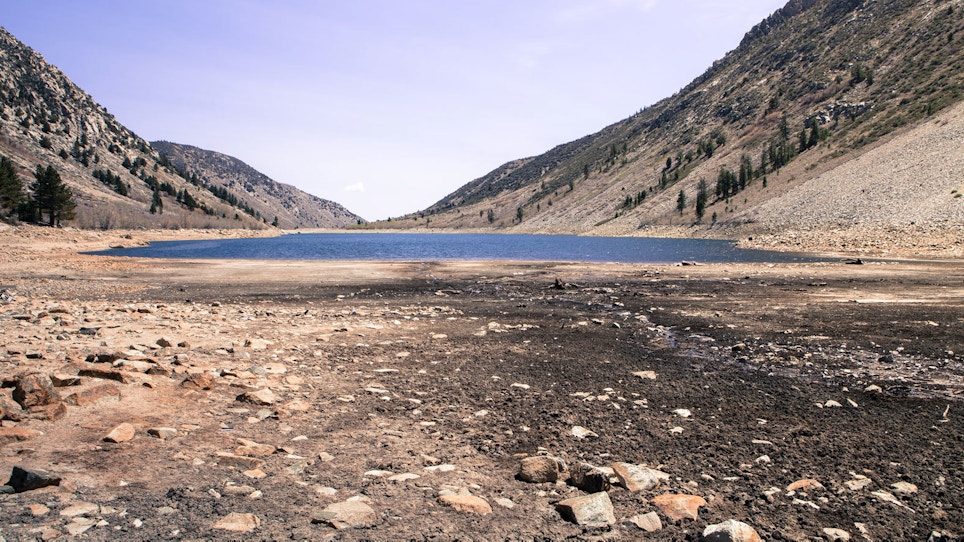By now, the news of the dire West Coast drought is of no surprise. It’s now entering its fourth year, and the headlines surrounding the issue underpin a steady but growing hysteria — although horror might be more apt.
In January, the governor of California declared a state of emergency and by May, mandatory water reductions of 25 percent were put into place. Stories of 0 percent snow pack circulated social media channels, and the images of parched and cracked earth play across the nightly news.
The hashtag #droughtshaming took off on social media as neighbors started ratting out less water-conscious neighbors. USA Today declared the new class war in California revolved around water, with green lawns being the target. In short, crazy times for an already crazy world.
For wildlife, the issue is not only water, but rising tension over management.
The problems of the Pacific Flyway are long and complicated, and in reality, drought, while being dominant at the moment, is only one of a more problematic list (urbanization, loss of habitat — the list goes on). Addressing them is a matter of connecting the dots and making some tough decisions and compromises.
Much of the habitat for waterfowl in the Pacific Flyway is found in the rice fields. After the crop is harvested, fields are flooded in preparation for the next crop. The combination of water and waste grain provides great habitat for migrating flocks.
However, with drought, those fields are dwindling. In 2015, only about 125,000 acres were flooded. In prior years, that number was closer to 300,000 acres.
Simultaneously, refuges are seeing cuts to the amount of water they are allocated similar to what the farmers are seeing, creating even less habitat.
On the opposite end, conditions in breeding grounds are good and record numbers of birds are flooding the system.
Mark Biddlecomb, director of operations for the western region of Ducks Unlimited, says it’s a double-edged sword.
“We’ve got this situation where we’ve got record or near-record numbers of birds being produced. Up until this past winter, we were able to manage our way around the drought. It hasn’t really hit home until this past winter. We were really expecting to see a real downside and got these tremendous rains in the winter. And we were able to dodge a bullet. But if it continues to next year, we’re going to see it in the populations.”
He says the dip in population will come in two forms. First is disease. Less habitat means more ducks in a more concentrated area, and when there is crowding, disease breaks out. Already there have been cases of botulism, which can go through a population quickly.
The second and more insidious decline comes from body condition of birds. If they come off the rice fields in poor shape, they approach the breeding season with a lower chance of reproducing.
“If they go back skinny, they might make it back, but hens won’t be able to produce the eggs and will not be as fit,” Biddlecomb says. “The amount of breeding that will happen will be less, but that won’t show up for a year or two in noticeable numbers.”
But breeding populations are not isolated to the prairie pothole region. What many people overlook, says John Devney, vice president of U.S. Policy at Delta Waterfowl, are the breeding grounds right in California.
He says that most recent research indicates the majority of mallards — 70 percent in fact —harvested in California are produced in California. And while the state has been managed as a wintering area, considerations must be taken for the production side as well.
“It used to be quite a bit higher than that,” Devney says. “It declined to 70 percent. Last year was the lowest population estimate ever recorded on that population.”
But bolstering that breeding population means taking away from the wintering populations, which is where connecting those dots comes into focus and a trade-off must be made.
Because of increased urbanization, there are fewer nesting locations available. But because of increased demand for water, a water market has been created, meaning farmers find benefit in leaving fields fallow and selling water downstream.
“There is a water economy, a water trade being developed that’s always been there, but it’s becoming more developed,” Devney says. “The value of that water is getting so high that rice producers are making decisions to idle acres here and there and sell that water.”
Bad for wintering ducks, but good for breeding ducks.
“One of the major problems of breeding mallards is there no place for them to nest,” says Devney. “These fallow acres may be a mechanism for these pairs to get nest area established.”






